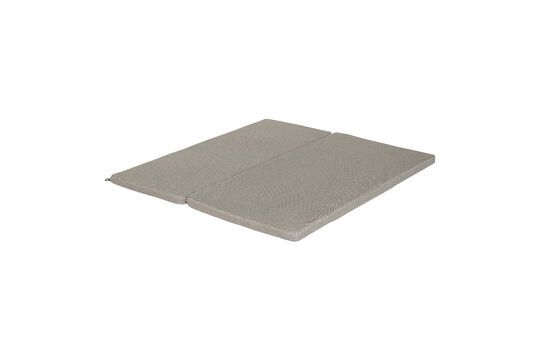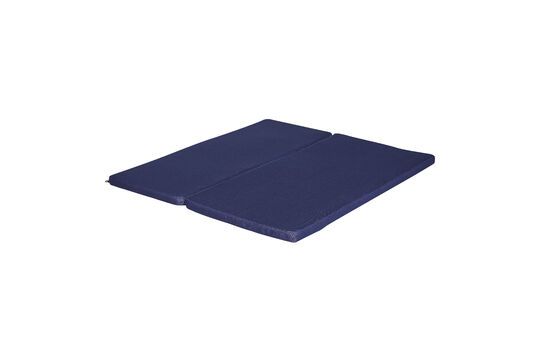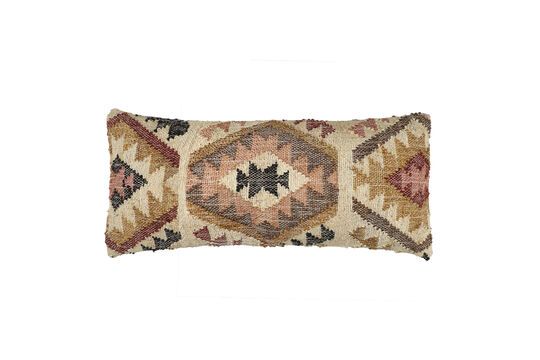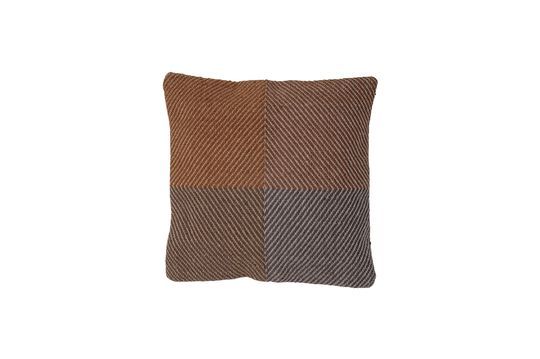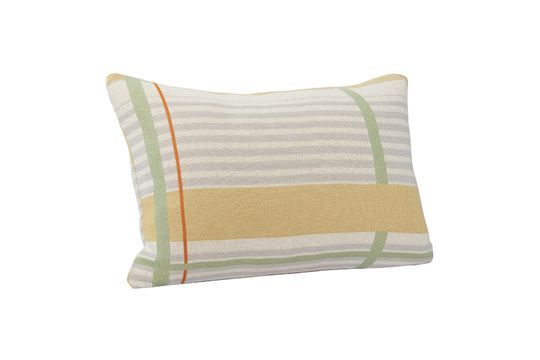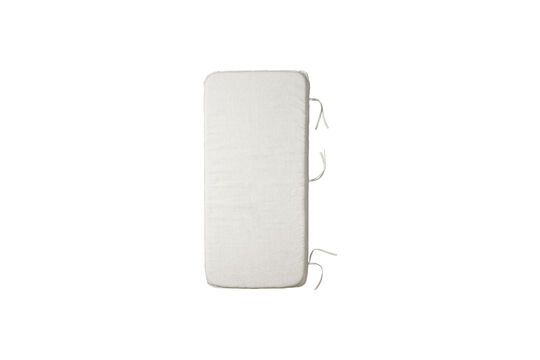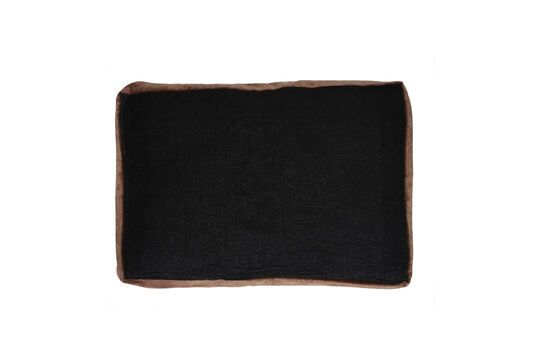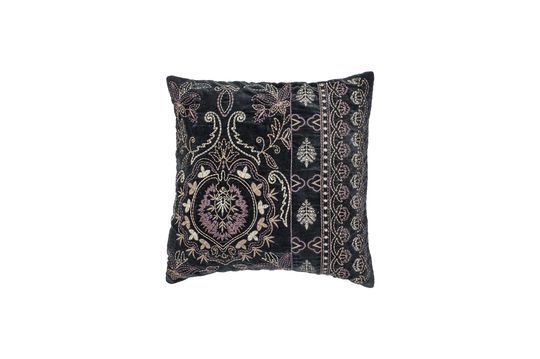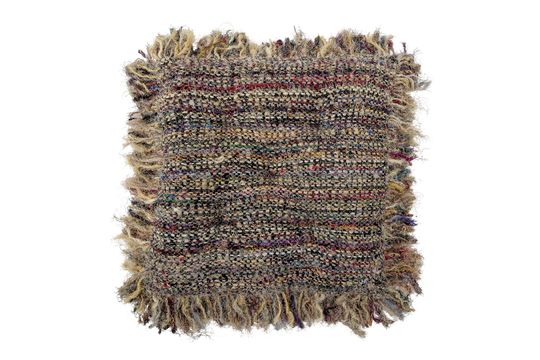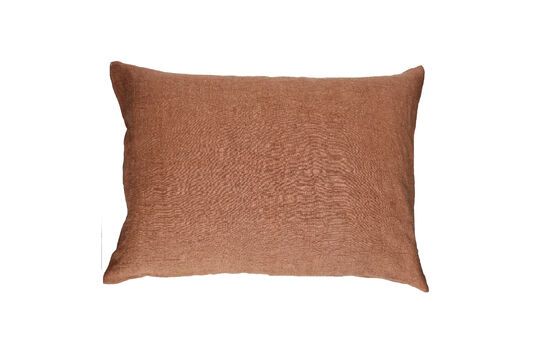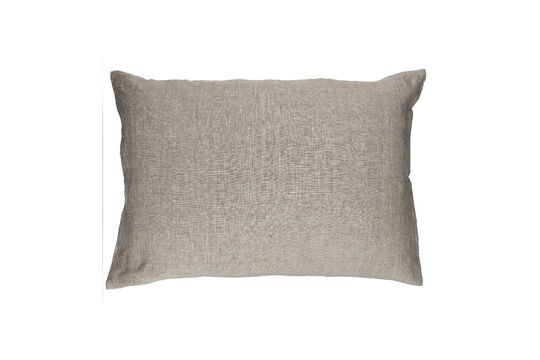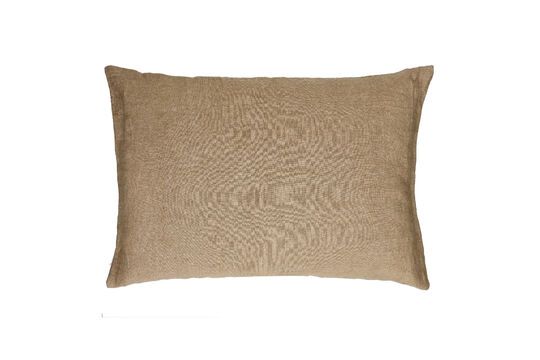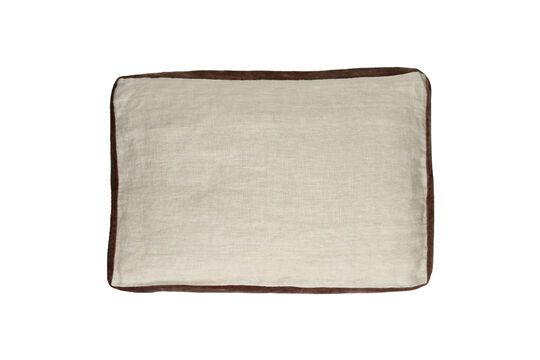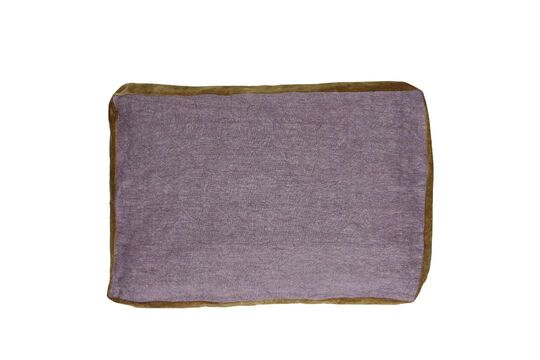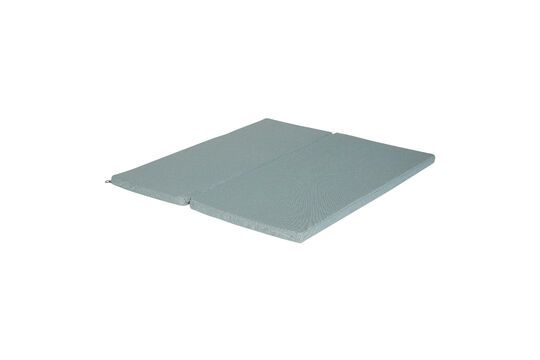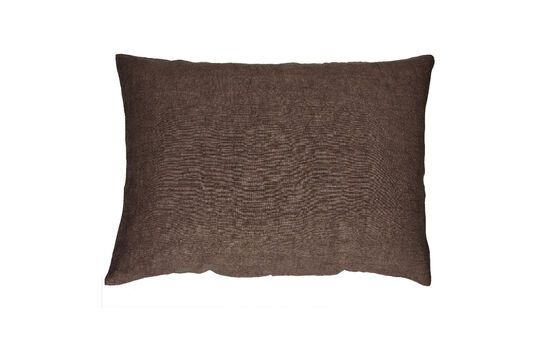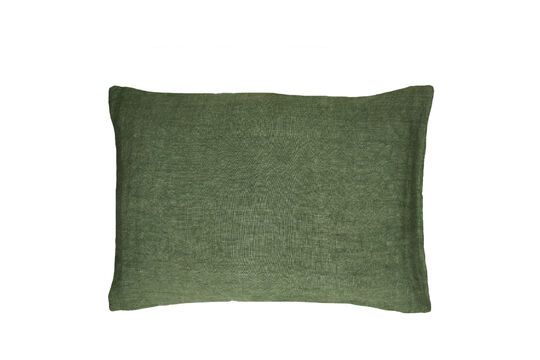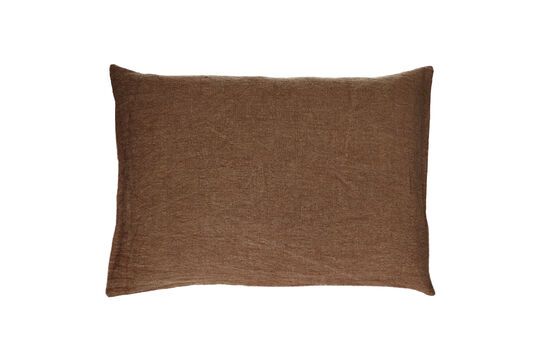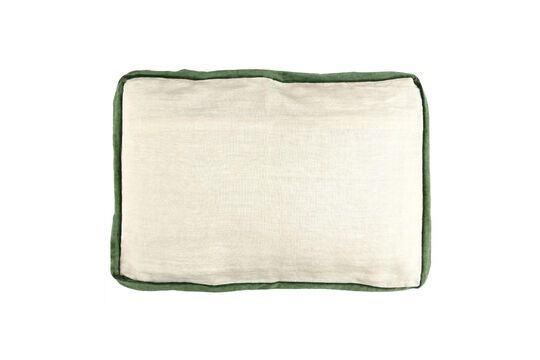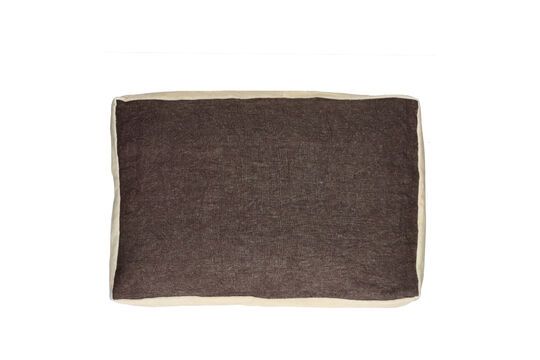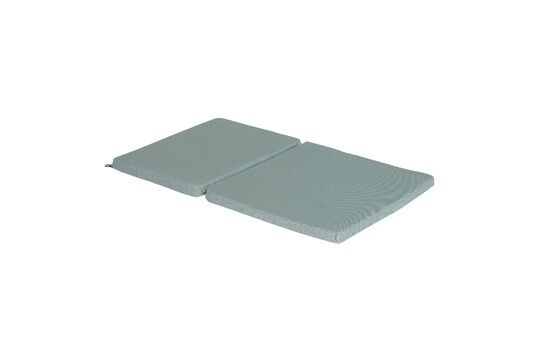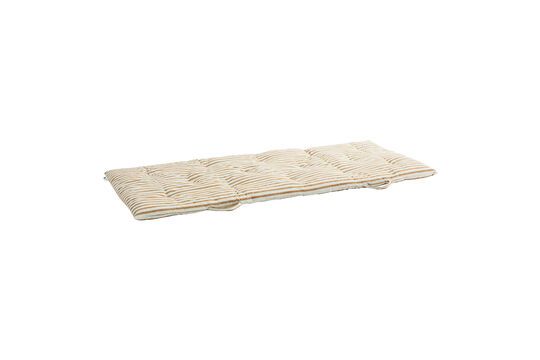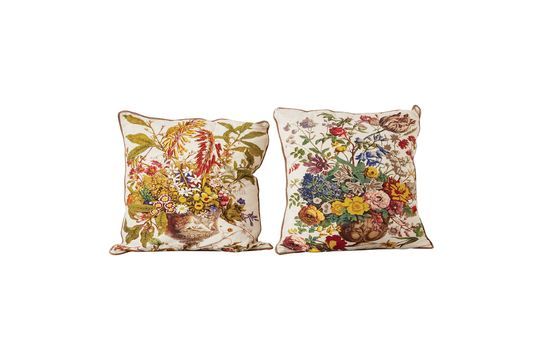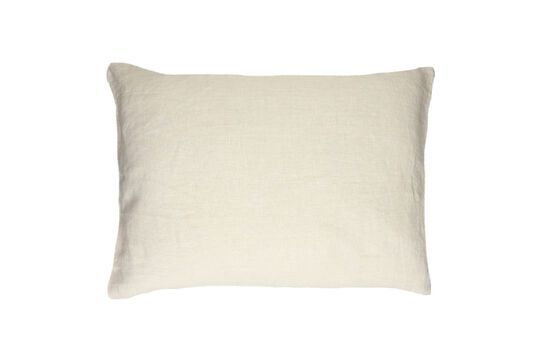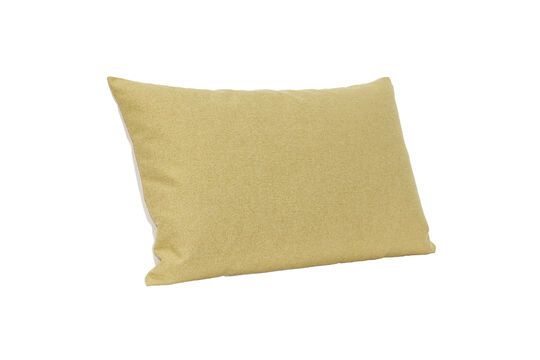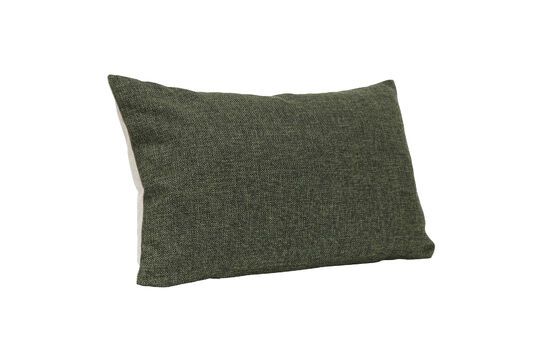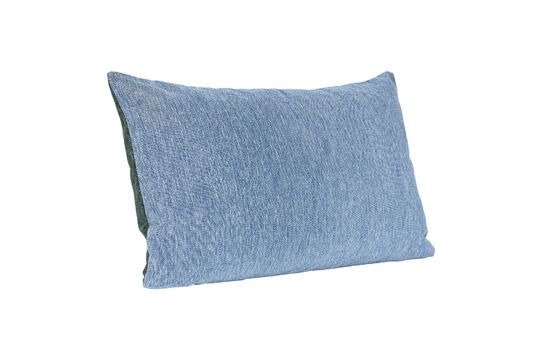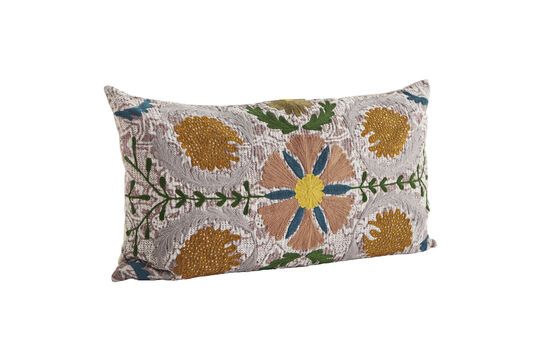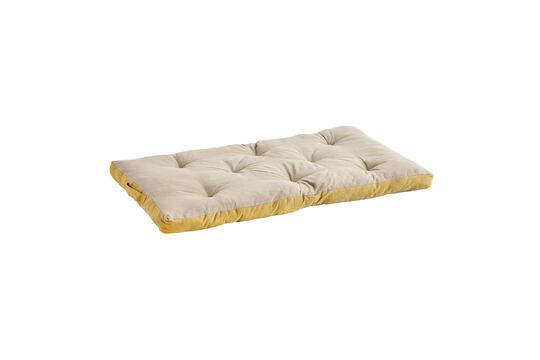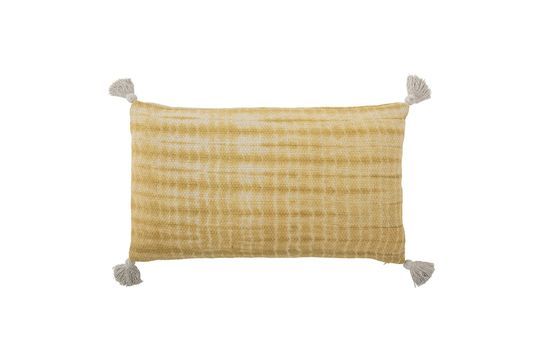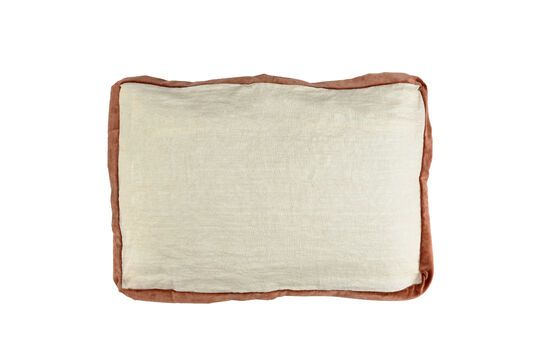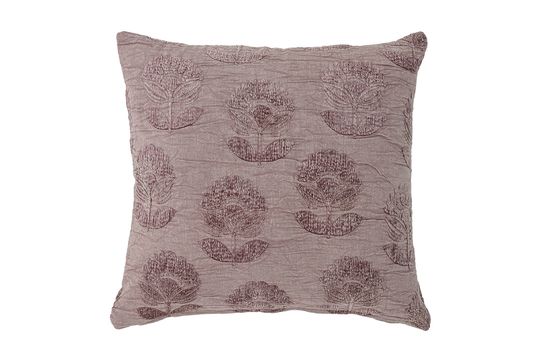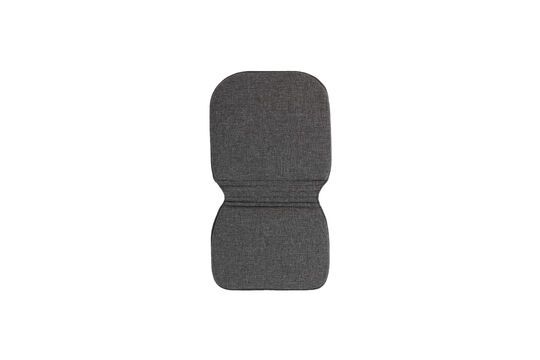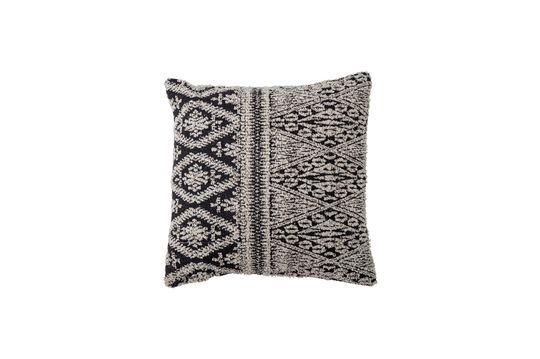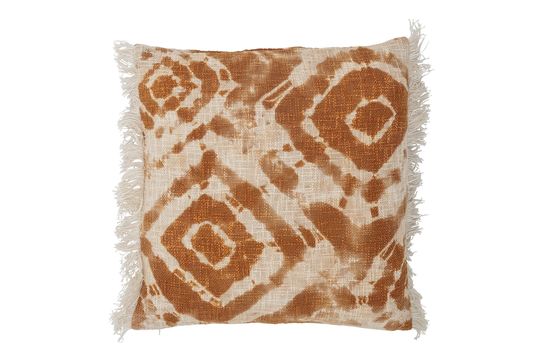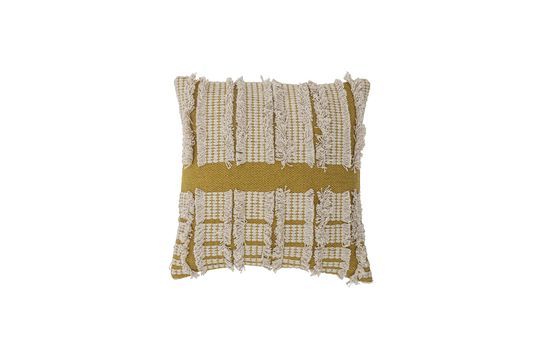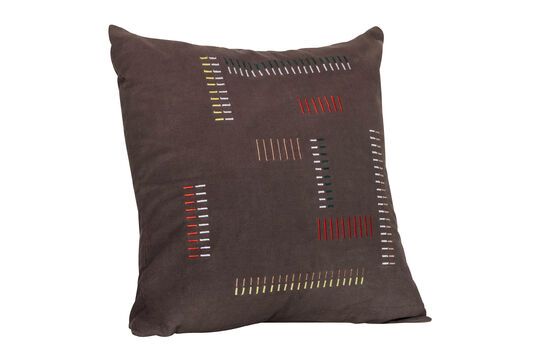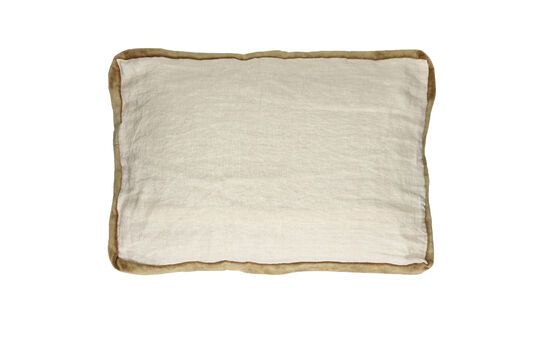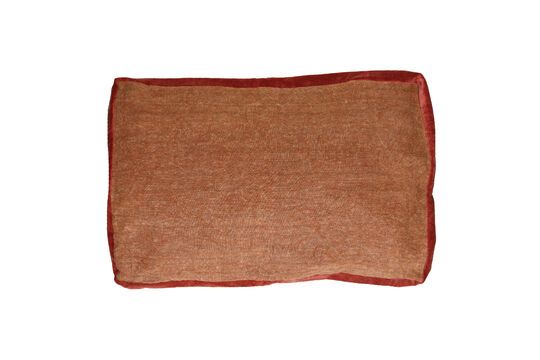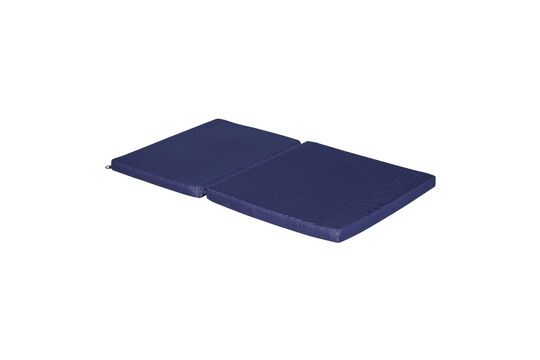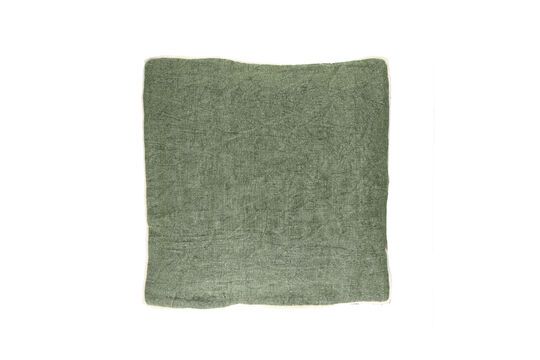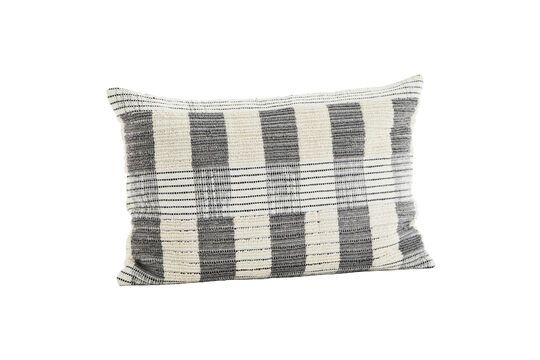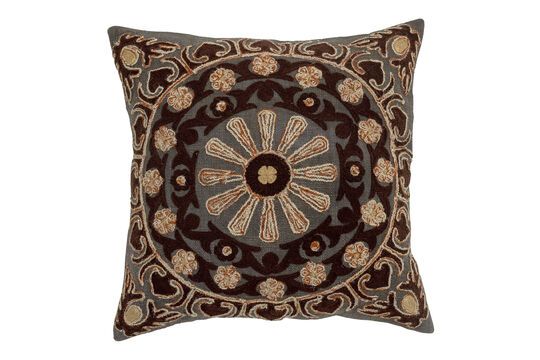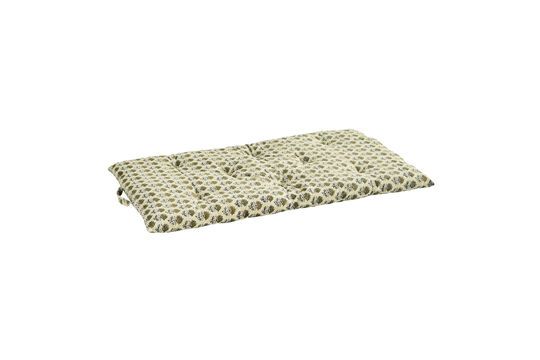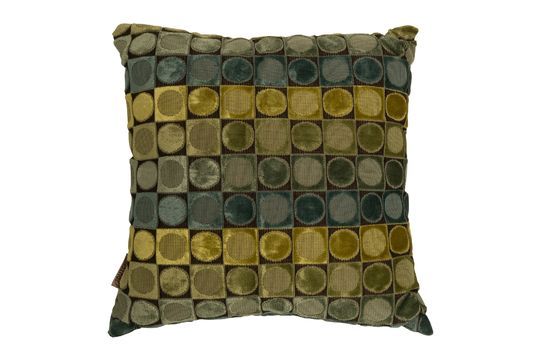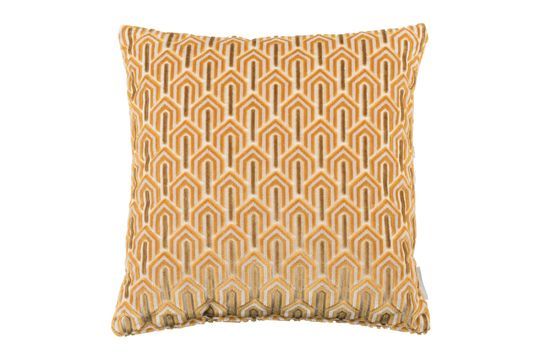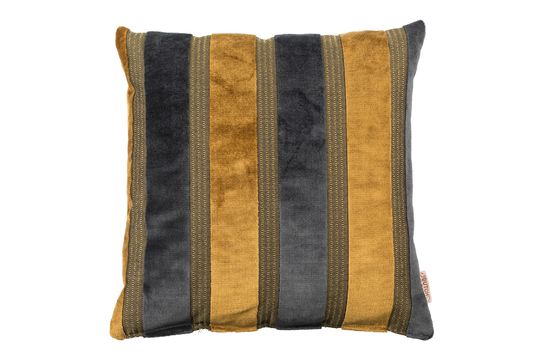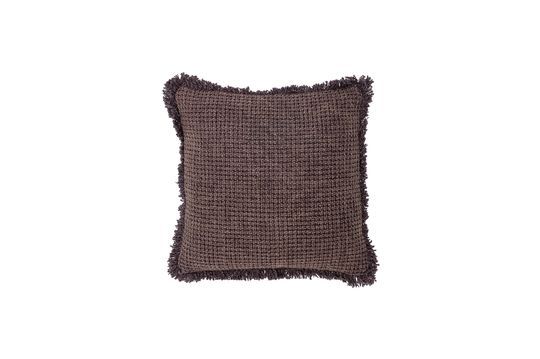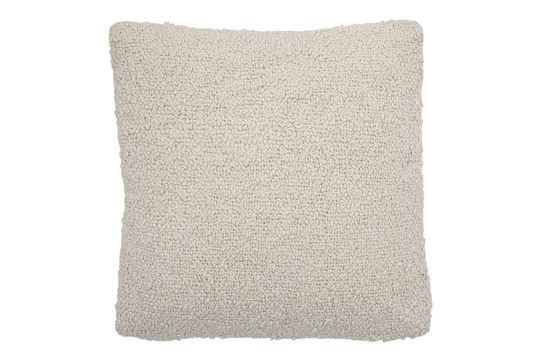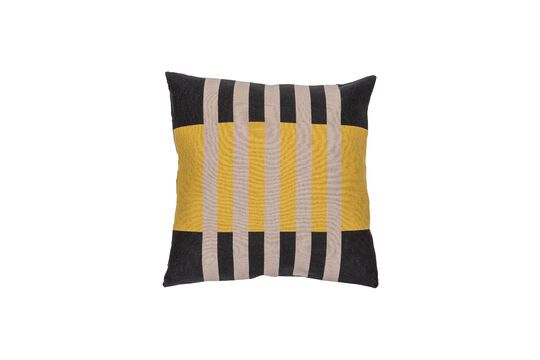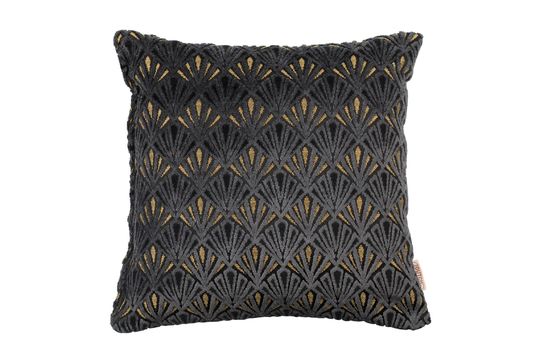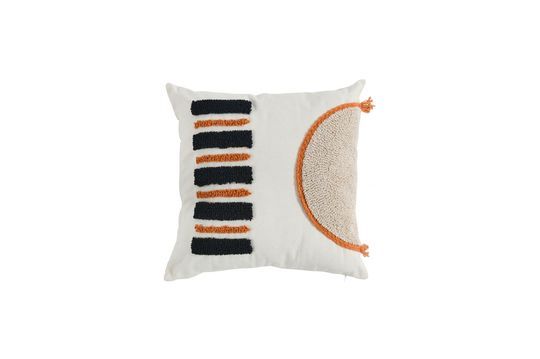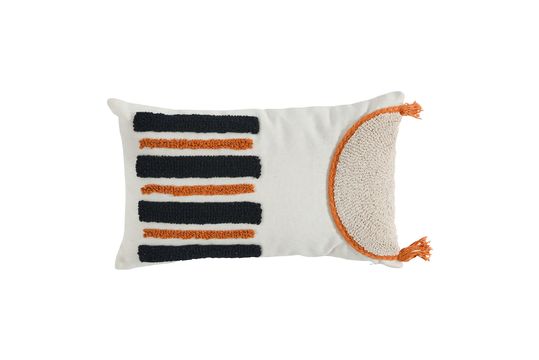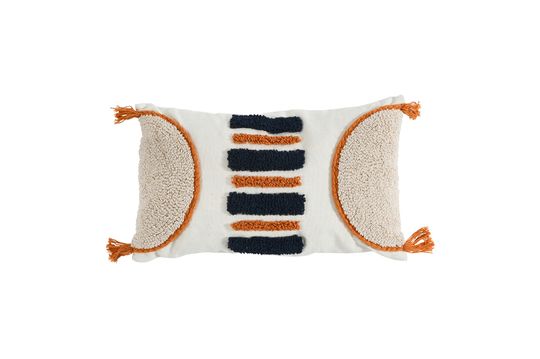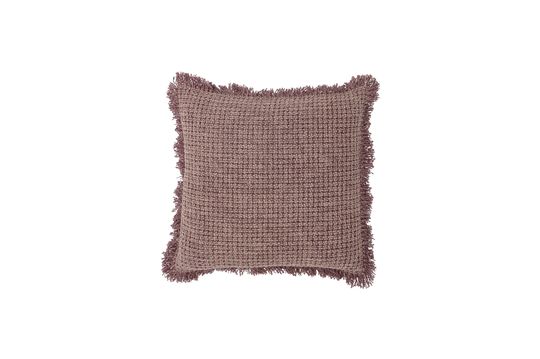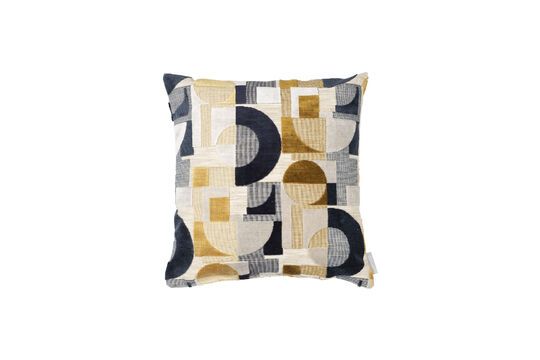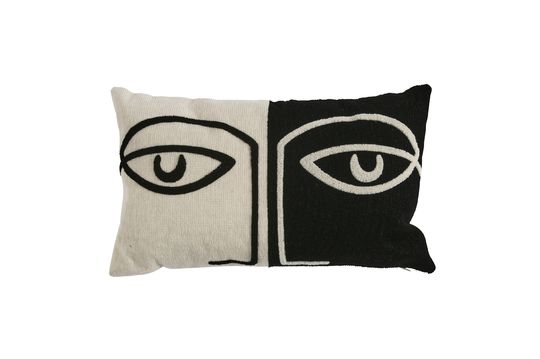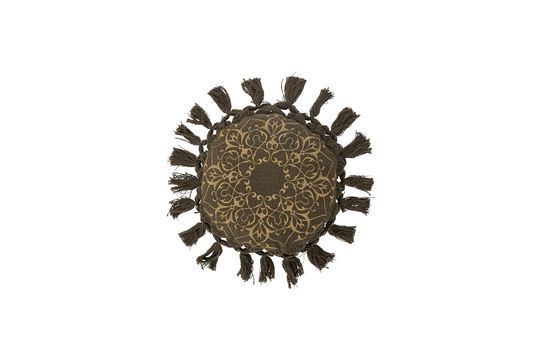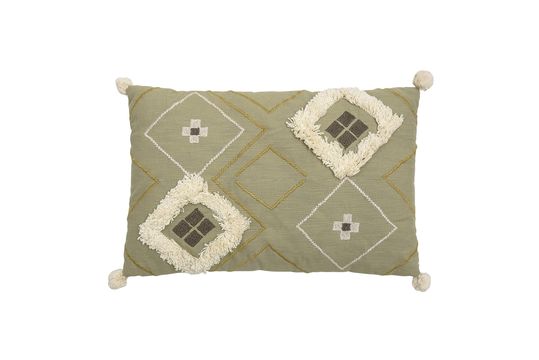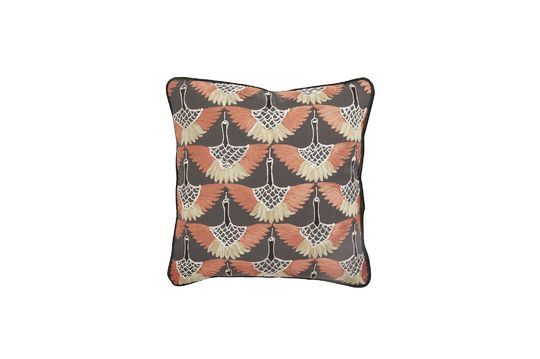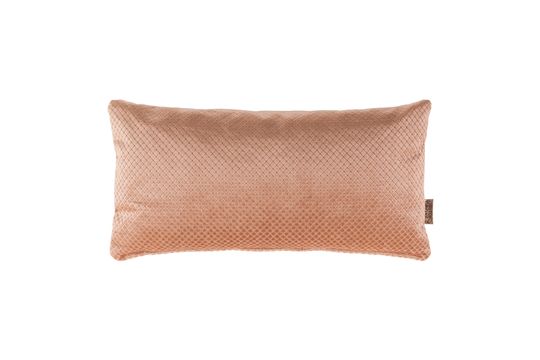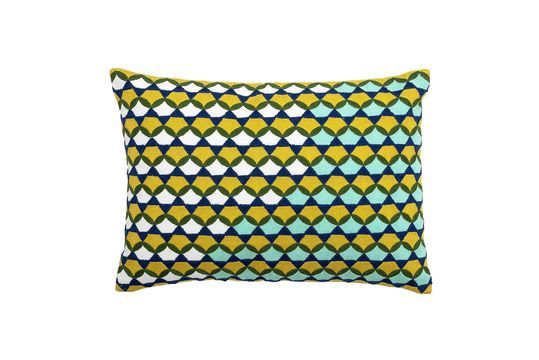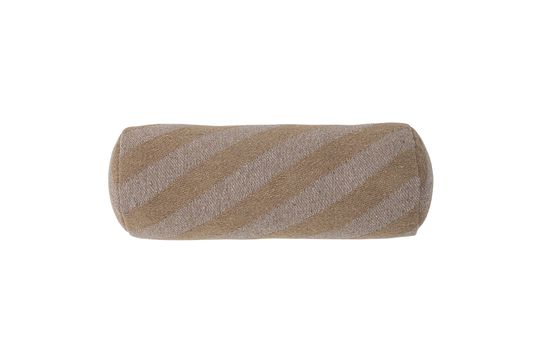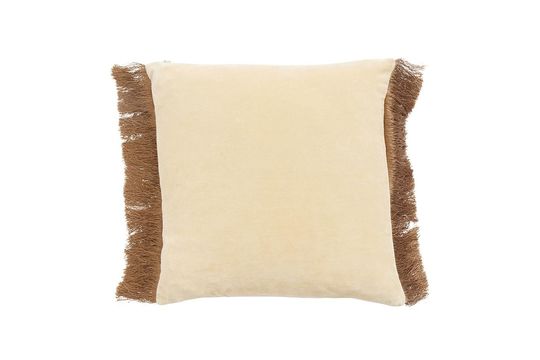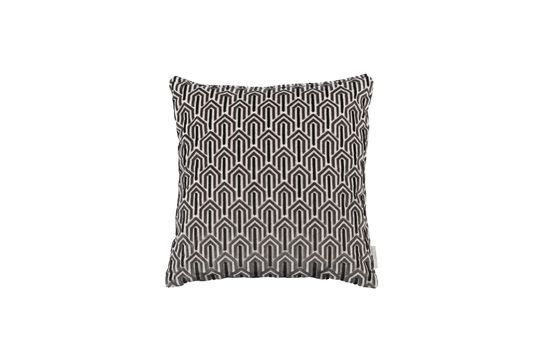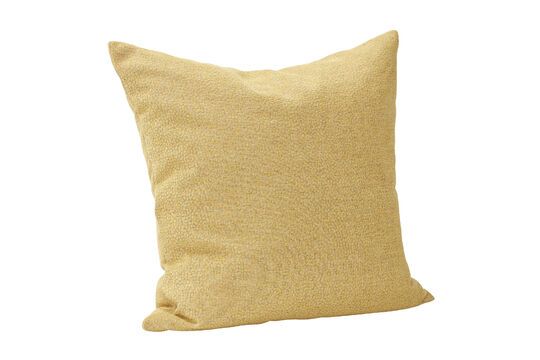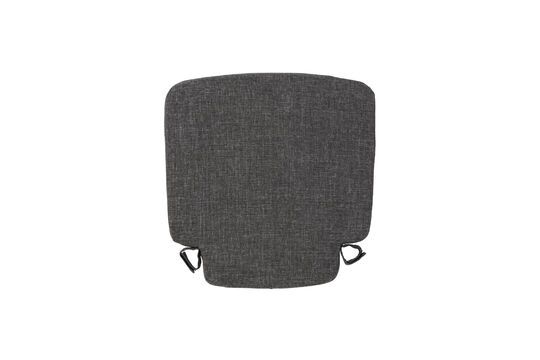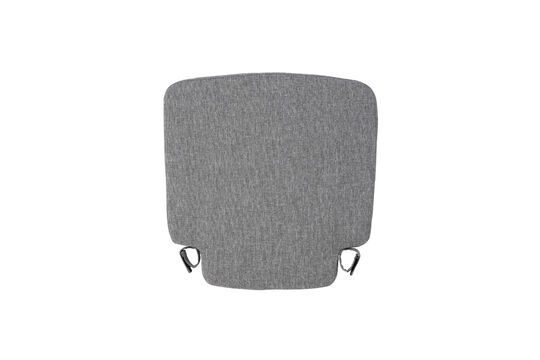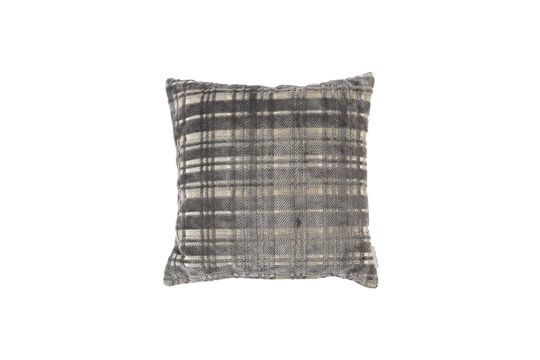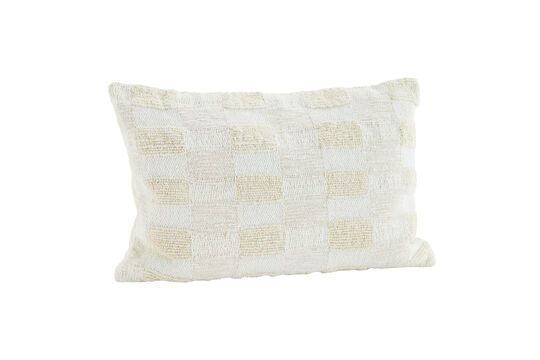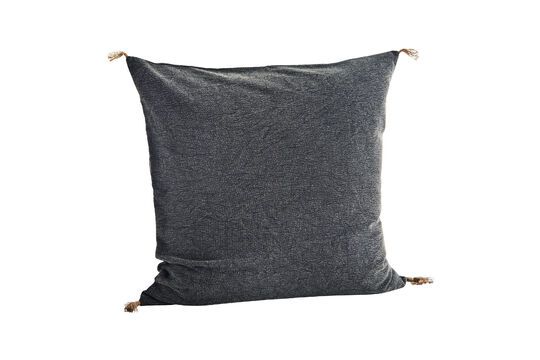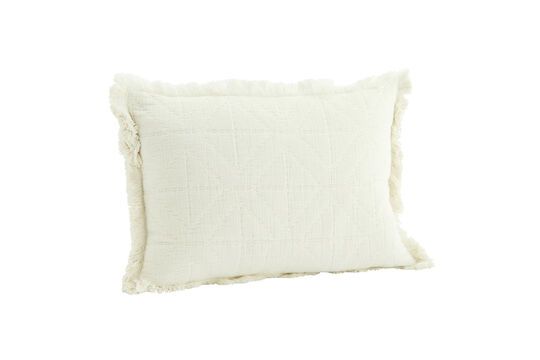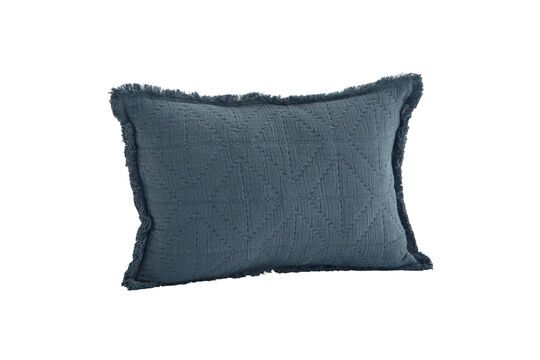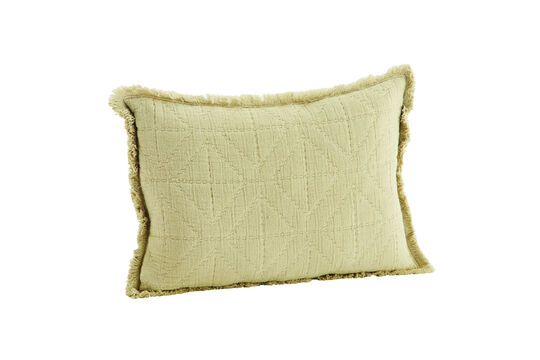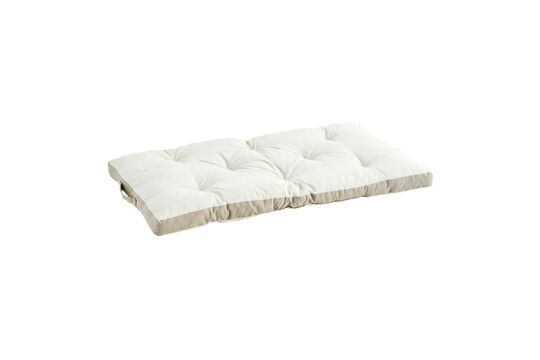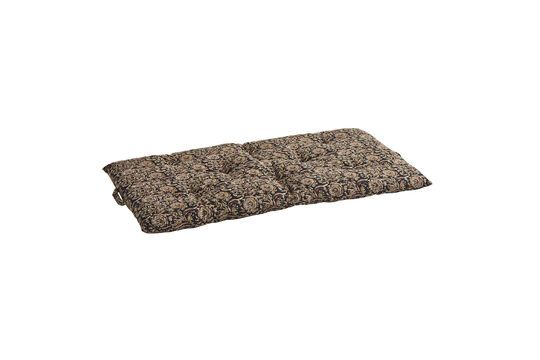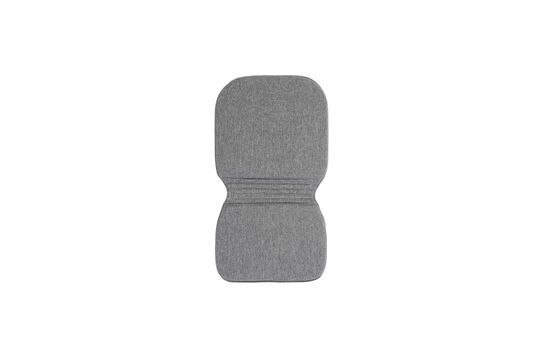United Kingdom - £ (gbp)
Select a country
Cushions & covers
Designer cushions add a touch of elegance and personality to any living space. With their unique patterns, textures, and colors, they serve as versatile decorative accents, enhancing the overall aesthetic of a room while also providing comfort and coziness. Whether used on a sofa, bed, or chair, designer cushions are a simple yet effective way to elevate the style and ambiance of a room. - read more -- Rugs
- Cushions & covers
- Seat cushions & covers
- Throws & blankets
Filter
Sort by
Hubsch String sand fabric seat cushion
£170.00 £145.00-15%
Hubsch String blue fabric seat cushion
£170.00 £145.00-15%
Pomax Isis multicolored cotton cushion
£145.00 £125.00-15%
Bloomingville Brown jute cushion Rodin
£110.00 £100.00-10%
Hubsch Multicolored cotton cushion Quadrum
£80.00
House Doctor Puna off-white cotton cushion
£280.00 £260.00-5%
Pomax Borders grey linen cushion
£90.00
Bloomingville Blue cotton cushion Frode
£75.00
Bloomingville Cotton cushion Darko
£95.00
Pomax Basics cinnamon cotton cushion
£105.00 £95.00-10%
Pomax Basics beige cotton cushion
£105.00 £95.00-10%
Pomax Basics ochre cotton cushion
£105.00 £95.00-10%
Pomax Borders ivory linen cushion
£90.00
Pomax Borders lavender linen cushion
£90.00
Hubsch String mint fabric seat cushion
£170.00
Pomax Basics brown cotton cushion
£105.00
Pomax Basics green cotton cushion
£105.00
Pomax Basics chocolate cotton cushion
£100.00
Pomax Borders white and green linen cushion
£95.00
Pomax Borders brown linen cushion
£90.00
Pomax Borders green linen cushion
£90.00
Pomax Borders natural linen cushion
£90.00
Hubsch String sand fabric cushion
£85.00 £85.00-2%
Hubsch String mint fabric cushion
£85.00
Madam Stoltz Yellow striped cotton cushion Honey
£145.00
Bloomingville Julos Multicoloured cotton cushion
£85.00
Pomax Basics ivory cotton cushion
£105.00 £95.00-10%
Hubsch Bliss blue and yellow fabric cushion
£80.00
Hubsch Bliss green cotton cushion
£80.00
Hubsch Bliss blue fabric cushion
£80.00
Hubsch Alive pink cotton cushion
£80.00
Madam Stoltz Embroidered cushion cover multi-coloured Suzani
£85.00
Madam Stoltz Taupe and mustard cotton mattress cushion Double
£65.00
Bloomingville Yellow cushion in recycled cotton Decia
£65.00 £50.00-25%
Pomax Borders white linen and cinnamon cushion
£95.00 £75.00-20%
Bloomingville Purple cotton cushion Sofia
£75.00 £70.00-5%
Zuiver Black fabric cushion Vondel
£60.00
Bloomingville Black cotton cushion Kuno
£95.00 £80.00-15%
Bloomingville Brown cotton cushion Ester
£80.00
Hubsch Sola mint fabric cushion
£75.00 £60.00-20%
Hubsch Floy sand cotton cushion
£75.00 £60.00-20%
Hubsch Floy brown cotton cushion
£75.00 £60.00-20%
Bloomingville Yellow cotton cushion Cea
£70.00 £60.00-15%
Pomax Opposites white and green linen cushion
£80.00 £65.00-20%
Hubsch Elodie brown cotton cushion
£70.00 £55.00-20%
Bloomingville Brown cotton cushion Gija
£65.00 £55.00-15%
Bloomingville Gulzar wool cushion
£70.00 £60.00-15%
Pomax Borders white linen and camel cushion
£95.00 £80.00-15%
Pomax Borders cinnamon linen cushion
£90.00 £75.00-15%
Hubsch String dark blue fabric cushion
£85.00 £70.00-20%
Pomax Opposites pale green linen cushion
£80.00 £65.00-20%
Bloomingville Cotton cushion Leva
£65.00 £60.00-10%
Bloomingville Delva cotton cushion
£65.00 £60.00-10%
Madam Stoltz Cugris grey cotton cushion cover
£45.00
Bloomingville Chinon brown cotton cushion
£105.00 £90.00-15%
Madam Stoltz Cream printed cotton mattress Double
£65.00
Bloomingville Brown cotton cushion Kita
£65.00 £60.00-10%
Dutch Bone Ottava Green and Blue Cushion
£55.00
Pomax Camel cotton cushion Opposites
£80.00 £65.00-20%
Pomax Opposites chocolate cotton cushion
£80.00 £65.00-20%
Pomax Cinnamon cotton cushion Opposites
£80.00 £65.00-20%
Pomax Purple cotton cushion Opposites
£80.00 £65.00-20%
Pomax Opposites ivory cotton cushion
£80.00 £65.00-20%
Pomax Opposites peach cotton cushion
£80.00 £65.00-20%
Pomax Opposites red cotton cushion
£80.00 £65.00-20%
Pomax Opposites pink cotton cushion
£80.00 £65.00-20%
Pomax Dark grey cotton cushion Opposites
£80.00 £65.00-20%
Pomax Duck blue cotton cushion Opposites
£80.00 £65.00-20%
Zuiver Beverly Yellow Cushion
£55.00
Dutch Bone Scott yellow and grey cushion
£55.00
Bloomingville Purple cotton cushion Delva
£55.00
Bloomingville Cotton cushion Goda
£85.00
Woood Large square cushion Valery
£55.00
Bloomingville Brown cotton cushion
£85.00
Dutch Bone Daisy gold Cushion
£55.00
Bloomingville Brown cotton cushion Lione
£75.00 £65.00-15%
Athezza White fabric cushion Pusha
£55.00
Athezza Large white fabric cushion Pusha
£55.00
Athezza White Fabric Cushion Musha
£55.00
Bloomingville Pink cotton cushion Delva
£55.00
Zuiver Blue fabric cushion Festive
£55.00
Pomax Ochre linen cushion Opposites
£80.00 £75.00-5%
Athezza Square cushion in white fabric Cat
£50.00
Athezza Rectangular cushion in cat fabric
£50.00
Bloomingville Green cotton cushion Kala
£50.00
Bloomingville Cotton cushion Eta
£50.00
Bloomingville Agnes natural cotton cushion
£50.00 £45.00-10%
Bloomingville Mazzola Multicoloured cotton cushion
£65.00
Hubsch Agenda blue cotton cushion
£75.00 £70.00-5%
Pomax Opposites white linen and camel cushion
£80.00 £75.00-5%
Pomax White linen and cinnamon cushion Opposites
£80.00 £75.00-5%
Nordal Revel cotton cushion cover
£55.00
Dutch Bone Spencer cushion old pink
£55.00
Pomax Opposites brown cotton cushion
£80.00 £75.00-5%
Bloomingville Coulx Green Cushion
£65.00
Bloomingville Brown cushion in recycled cotton Katrín
£65.00
Nordal Feuchy Cushion cover in yellow velvet
£60.00
Hubsch Elodie multicolored cotton cushion
£70.00 £65.00-5%
Zuiver Beverly cushion Black
£55.00
Bloomingville White cotton cushion Ayn
£50.00
Hubsch Speckle orange and sand canvas cushion
£75.00
Hubsch Blue and sand Speckle canvas cushion
£75.00
Hubsch Poppy yellow fabric cushion
£75.00
Hubsch Sola red fabric cushion
£75.00
Pomax Opposites green cotton cushion
£80.00
Pomax Opposites beige cotton cushion
£80.00
Pomax Ochre cotton cushion Opposites
£80.00
Hubsch Speckle multicolored cotton cushion
£70.00
Hubsch Pavilion multicolored cotton cushion
£70.00
Zuiver Black fabric cushion Friday
£55.00
Zuiver Grey fabric cushion Friday
£55.00
Zuiver Grey fabric cushion Dandy
£55.00
Bloomingville Yellow cotton cushion Alloa
£50.00
Bloomingville Brown cotton cushion Baloo
£50.00
Madam Stoltz Off-white cotton cushion cover Cucasse
£45.00
Bloomingville Brown cotton cushion Bali
£35.00
Madam Stoltz Anthracite cotton cushion cover Curacite
£35.00
Bloomingville Moony white cotton cushion
£35.00
Madam Stoltz Off-white cotton Quilt cushion cover
£35.00
Madam Stoltz Quilt blue cotton cushion cover
£35.00
Madam Stoltz Quilt green cotton cushion cover
£35.00
Bloomingville Trudy brown OEKO-TEX cotton cushion
£30.00
Madam Stoltz Taupe and cream cotton mattress cushion Double
£65.00
Madam Stoltz Bordeaux printed cotton mattress Double
£65.00
Bloomingville Green cotton cushion Nill
£50.00
Madam Stoltz Sand printed cotton mattress Double
£65.00
Zuiver Grey fabric cushion Vondel
£60.00
Hubsch Agenda cotton cushion
£75.00 £70.00-5%
Hubsch Willow dark blue fabric cushion
£70.00
The essence of designer cushions
History and evolution
Designer cushions have a rich history, tracing back to ancient civilizations. Initially, cushions were a luxury only the wealthy could afford, prominently featured in the palaces of ancient Egypt and China. These early cushions were simple in design, primarily serving functional purposes. As trade routes expanded, so did the exchange of fabric and design ideas. By the Renaissance period, cushions had evolved to showcase intricate patterns and luxurious fabrics, symbolizing status and wealth in European households. In the 20th century, with the rise of global fashion and interior design movements, cushions transformed from mere comfort providers to essential home décor items. Today, they not only add comfort but also define style, embodying artistic expressions and reflecting personal tastes in contemporary homes.
The anatomy of a designer cushion
At the heart of every designer cushion lies a harmonious blend of form and function. Starting with the core, cushions typically have an insert filled with materials like foam, down, or synthetic fibers, determining its firmness and resilience. The outer shell or cover, often made from luxurious fabrics like silk, velvet, or organic cotton, is where the designer´s vision truly comes to life. It may showcase intricate patterns, embroidery, or unique prints. Seams, piping, or tassels add detail and structure. Zippers or button closures ensure easy maintenance. Some cushions also feature additional layers or linings for durability. Beyond the tactile, the choice of colors and patterns play a pivotal role in setting mood and ambiance. Every element, from the inside out, is meticulously chosen to ensure both comfort and a chic aesthetic.
Why invest in designer cushions ?
Investing in designer cushions is an investment in both comfort and style. These cushions are meticulously crafted, ensuring longevity and durability, which can lead to cost savings over time. Their unique designs, sourced from creative minds worldwide, make them stand out, elevating any living space's aesthetic. They act as versatile style statements, effortlessly transitioning from one décor trend to another. Additionally, designer cushions often use high-quality, sustainable materials, making them eco-friendly and suitable for those with sensitive skin or allergies. They're more than just accessories; they're a reflection of one's taste and personality, adding warmth, character, and sophistication to interiors. Ultimately, designer cushions blend art with functionality, making homes both chic and cozy.
Selecting the perfect designer cushion for your space
By design aesthetic
Selecting the perfect designer cushion starts with understanding your design aesthetic. Whether you're drawn to minimalist design, bohemian, contemporary or vintage vibes, the cushion should resonate with your décor language. Minimalist spaces benefit from monochromatic or subtly patterned cushions, while bohemian homes welcome rich textures and vibrant colors. Vintage aficionados might lean towards cushions with retro patterns or antique finishes, and modern spaces often shine with bold graphics and clean lines. Additionally, consider the color palette of the room. A contrasting cushion can become a focal point, whereas a complementary one can unify the space. Also, don't forget about patterns and prints; they can either harmonize or add dynamic tension. Recognizing your aesthetic preferences is the first step to ensuring your designer cushion not only beautifies but also enhances the narrative of your space.
Functionality and size
When selecting a designer cushion, functionality and size are as pivotal as aesthetics. First, determine the cushion's primary purpose. Is it for lumbar support, sprawling out during a movie night, or purely decorative? For back support on a sofa, a rectangular lumbar cushion might be ideal. Larger floor cushions provide extra seating, while smaller ones are perfect decorative accents.
Next, assess the furniture it will accompany. A deep-seated sofa might need bigger cushions, while a delicate accent chair might be overwhelmed by anything too large. Harmonizing cushion size with furniture ensures visual balance.
Lastly, consider layering different sizes. Combining large, medium, and small cushions adds depth and visual interest. The key is ensuring each cushion has a purpose, be it functional or decorative, and fits harmoniously within the space.
Material and touch
The choice of material in a designer cushion is the bridge between aesthetics and comfort, playing a pivotal role in the touch and feel of the piece. Velvet cushions offer a lush, tactile experience, perfect for a luxe ambiance, while organic cotton ones give a breathable and eco-friendly touch, suited for casual, laid-back settings. Linen, with its natural texture, injects a rustic charm, while silk cushions epitomize elegance and sophistication.
Beyond aesthetics, consider the practicality. For spaces frequented by children or pets, stain-resistant and durable fabrics like synthetic blends might be ideal. Conversely, for a luxurious touch in a private setting, nothing beats the softness of genuine down or feather-filled cushions.
In essence, the material you choose should resonate with your style, offer the desired comfort, and cater to the practical needs of your space.
Integrating designer cushions in your home
Cushions for your sofa
Integrating designer cushions into your sofa setting is an art. The number required largely depends on the sofa's size and your style. For a standard three-seater sofa, a mix of 3-5 cushions offers balance. A symmetrical arrangement, with two on each end and one in the middle, is classic. However, for a modern twist, an asymmetrical layout can be chic.
Combining different cushions amplifies depth and visual interest. Pair large, solid-colored cushions with smaller ones bearing contrasting patterns. Play with textures: velvet with linen or silk with woven fabrics. Consider a cohesive color palette, either complementary or contrasting, to maintain harmony. In essence, while there's no strict rule, the aim should be a mix of comfort, style, and a reflection of your personal taste.
Cushions for your bed
Optimizing designer cushions for your bed is an exercise in luxury and functionality. Typically, for a queen or king-sized bed, 3-5 cushions, layered with your regular pillows, strike the right balance. Begin with larger cushions at the back and gradually taper down in size as you move forward.
When combining, it's a dance of pattern, texture, and color. Pair a dominant pattern with more subtle, complementary designs. Introduce a mix of shapes: square, rectangular, or even round cushions. This variety creates depth and an inviting allure.
For a harmonious look, maintain a consistent color palette that complements your bedding. Yet, an occasional pop of color or a standout pattern can be a delightful surprise. Ultimately, your bed should feel like a retreat, and the right cushion ensemble elevates both its style and comfort quotient.
The perfect cushions for your chairs
Selecting designer cushions for chairs marries aesthetics with ergonomics. Typically, each chair requires just one cushion for optimal comfort, but the size and shape largely depend on the chair's design. A dining chair might benefit from a sleek, rectangular cushion, while an armchair could cozy up with a plush, square one.
Texture plays a pivotal role here. Rough-hewn wooden chairs come alive with soft, velvety cushions, while metallic or plastic chairs can be warmed with woven or knit textures. The cushion's color should either contrast or complement the chair's hue, adding depth and intrigue to the space.
Patterns can be a game-changer, especially for neutral or monochromatic chairs. A bold geometric or a delicate floral cushion can elevate the chair from utilitarian to a statement piece. In essence, the cushion should enhance the chair's comfort, while seamlessly integrating with its design narrative.
The MEV guarantee
- Furniture with style, quality and timelessness
- Unparalleled customer service (18.8 / 20)
- More than 9 products out of 10 are in stock
